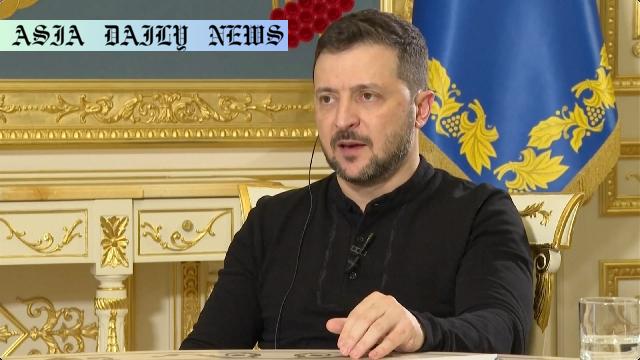Ceasefire: Ukrainian President Volodymyr Zelenskyy criticizes Russia’s three-day ceasefire proposal as a theatrical maneuver.
Russian President Vladimir Putin declares a unilateral three-day ceasefire.
Ukrainian President Zelenskyy critiques the proposal as unviable and urges for a 30-day truce.
Zelenskyy warns of potential staged incidents during anniversary celebrations in Russia.

Introduction to the Ceasefire Situation
The ongoing conflict between Ukraine and Russia has recently seen a new development with Russian President Vladimir Putin’s announcement of a unilateral three-day ceasefire, set to align with the anniversary of the Soviet Union’s victory in World War Two. While superficially appearing to be a goodwill gesture, this announcement has been met with criticism and skepticism, especially from Ukrainian President Volodymyr Zelenskyy, who denounced the move as a ‘theatrical performance’ devoid of genuine intent to resolve the conflict.
Zelenskyy’s Perspective on the Ceasefire
President Zelenskyy has sharply criticized the announcement, emphasizing its impracticality in bringing any constructive resolution to the ongoing war. Citing the inherent limitations of a mere three-day ceasefire, he reiterated the necessity for a minimum 30-day unconditional truce to create a foundation for meaningful peace talks. According to Zelenskyy, the short nature of the proposed ceasefire renders it ineffective, as the time frame is too limited for strategizing or building trust between the conflicting sides.
Potential Russian Motives Behind the Ceasefire
Analyzing the timing and nature of the announcement, Zelenskyy expressed concerns about Russia’s intent. Given that the ceasefire proposal coincides with a historically significant anniversary, he suggested that this may be an attempt by Russia to portray itself as a proponent of peace on the global stage. However, Zelenskyy warned international onlookers, especially foreign guests attending the anniversary celebrations, that they may be placed in danger, as Russia could potentially manufacture incidents to implicate Ukraine.
Meeting with US President Trump
In the midst of discussing the ceasefire situation, Zelenskyy revealed insights from his recent meeting with former US President Donald Trump at the Vatican. He described the meeting as short but impactful, considering it the most substantive discussions they have had regarding the Ukraine conflict. Zelenskyy believes this meeting may have influenced Trump’s perspective, potentially shifting opinions in favor of Ukraine.
Broader Implications for the Conflict
The proposed ceasefire highlights the larger difficulties in achieving peace amidst deep mistrust and ongoing hostilities. While Ukraine continues to call for unconditional truces to alleviate civilian suffering, Russia’s actions have drawn skepticism regarding its real motivations. The international community faces challenges in interpreting and responding to such gestures, as hastily organized proposals could risk worsening the already dire conflict situation.
Conclusion
The situation surrounding Russia’s unilateral ceasefire demonstrates the complexities of modern conflict resolution. While peace proposals are pivotal, any meaningful gesture must be built on trust, adequate timeframes, and genuine intent by all parties involved. Zelenskyy’s insistence on a longer ceasefire reflects the broader realities of war, especially when balancing immediate needs against long-term solutions.
Commentary
Russia’s Ceasefire Plan: A Gesture or a Strategy?
The announcement of a three-day ceasefire by Russian President Vladimir Putin undeniably raises questions about the nation’s true motivations. On the surface, such proposals seem to gesture towards peace, yet the short window limits any real progress in conflict resolution. Ukrainian President Zelenskyy’s reaction reflects a skeptical yet pragmatic stance, emphasizing the necessity of extended, unconditional truces to establish trust and foster discussions.
The Importance of Genuine Intent in Peace Talks
For any ceasefire to bear fruit, it must be coupled with clear indications of goodwill. Unfortunately, in this case, the short timing of the proposal, intertwined with a historically strategic anniversary, suggests possible performative elements in Russia’s plan. This tactic risks being perceived as a manipulative effort to sway global opinion rather than an earnest attempt to bring about resolution. If such ceasefire gestures are hollow, they further erode trust between the parties involved.
Broader Stakeholders: Global and Local Perspectives
The conflict between Ukraine and Russia transcends bilateral interests, deeply affecting regional stability and drawing in the global community. Zelenskyy’s warnings about the safety of foreign delegates attending events in Russia further illustrate the precarious nature of the situation. These potential risks underscore the urgency of coordinated international responses to peace proposals, ensuring such measures are scrutinized and, when appropriate, amplified to contribute to meaningful peace.
The Need for Long-Term Vision
Ceasefires, regardless of their intent, highlight the need for broader strategies aimed at long-term solutions. Zelenskyy’s call for a 30-day truce embodies such a vision—a proposal not merely meant to pause the violence temporarily but to lay the groundwork for dialogue and reconstruction. Achieving this, however, requires global pressure on conflicting sides, emphasizing accountability and transparency throughout the peace process.
Conclusion
Ultimately, the global community must recognize the delicate balance required in addressing such conflicts. While peace gestures, short or long, must always be encouraged, it falls upon all stakeholders to ensure that these initiatives remain sincere, actionable, and inclusive. In doing so, the world not only addresses current violence but also contributes to lasting peace and stability in the region and beyond.


